If you’re looking for an objective assessment of the best gravel bikes on sale in 2025, you’ve come to the right place. All of the bikes in this article have been ridden and rated by BikeRadar’s expert testers.
Gravel and all-road are terms used for this rapidly growing segment of the drop-bar bike market. These bikes have generous tyre clearances and gravel-specific geometry that's typically more stable and forgiving than traditional road bike geometry.
Modern gravel bikes were born out of the American Midwest, where gravel racing took hold a decade ago and has gained popularity steadily since.
In the early days, riders tackled these endurance events on cyclocross bikes. Today, there are numerous purpose-built machines, from gravel race bikes and versatile all-road bikes that rival the best road bikes, to progressive gravel bikes that resemble drop-bar mountain bikes.
Our team of testers have been involved in the world of gravel bikes since their inception. Our senior technical editor, Warren Rossiter, first tested a thoroughbred gravel bike at the beginning of the 2010s and since then he reckons he’s reviewed close to 200 gravel bikes.
Many of our testers have also come to gravel via road riding or mountain biking. They bring a unique mix of insight and expertise, analysing how these bikes compare to the best road or best mountain bikes.
The selection of gravel bikes in this list represents the very best gravel bikes we’ve tested, considering frame materials, riding styles and price points. This means there should be something for everyone, from those looking for a cheap entry into off-road riding to those looking to take on the Silk Road Mountain Race or Unbound.
The best gravel bike frames come in the same variety of frame materials as other bike types, with carbon, aluminium, titanium and steel options commonly available.
We have split our list of top-performing gravel bikes into each different frame material. You can skip to each section depending on what you're looking for in a gravel bike:
- Carbon gravel bikes offer low weights, and balance stiffness and compliance
- Aluminium gravel bikes are often the most affordable option
- Titanium gravel bikes are incredibly desirable and often considered 'forever bikes'
- Steel gravel bikes have a classic feel and tend to be favoured by bikepackers
You can also skip to our buyer’s guide to gravel bikes, which explains everything you need to know about these practical, versatile and fun bikes.
Editor's note: this list was updated on 6 May 2025 with our latest top-rated gravel bikes, including the Guava Spot Force AXS. We also removed entries that are no longer available for purchase.
Best gravel bikes in 2025
Best carbon gravel bikes
Carbon fibre gravel bikes are lightweight, stiff and designed to absorb vibrations effectively.
Carbon fibre’s pliancy will do a lot of work to minimise any chatter from the surface beneath while still letting you put a lot of power through the cranks.
Many of the fastest gravel bikes for racing are made from carbon, but there are plenty of carbon gravel bikes tailored to bikepacking and more technical riding.
Below is a selection of carbon gravel bikes we have tested that encompasses most of the above. Head to our full buyer’s guide to the best carbon gravel bikes for a complete rundown of every model we have tested.
Canyon Grail CFR Di2

- £6,699 / €6,999 / AU$10,599 as tested
- Pros: Calm, confident and stable handling; well-designed frame storage; comfortable
- Cons: Tyres are fitting for the genre but slightly fragile; we'd have preferred regular mudguard mounts
Canyon revamped its Grail gravel race bike in 2023, with the new bike incorporating nifty features such as down tube storage and a new Double Drop handlebar that replaces the controversial Hover bar of old.
Some may wish for a more voluminous tyre clearance, with the Grail rated for 45mm rubber.
Deputy editor Jack Luke found it to be one of the best-handling bikes he's ever ridden and was very impressed by its confident, sure-footed handling at high speed without being dull on technical terrain.
It's a comfortable ride, too, thanks to the well-considered geometry. There's plenty of scope to adapt the bike to your riding, thanks to the novel Gear Groove feature on the handlebar and provision for Canyon's own mudguard. You can even add the brand's new Fork Sleeve for triple cargo mounts on the fork for bikepacking.
Be aware the Schwalbe G-One RS tyres are a race-oriented option though and are therefore a bit delicate for especially rocky riding.
- Read more: Canyon Grail CFR Di2 review
Canyon Grizl CF SL 8 1by
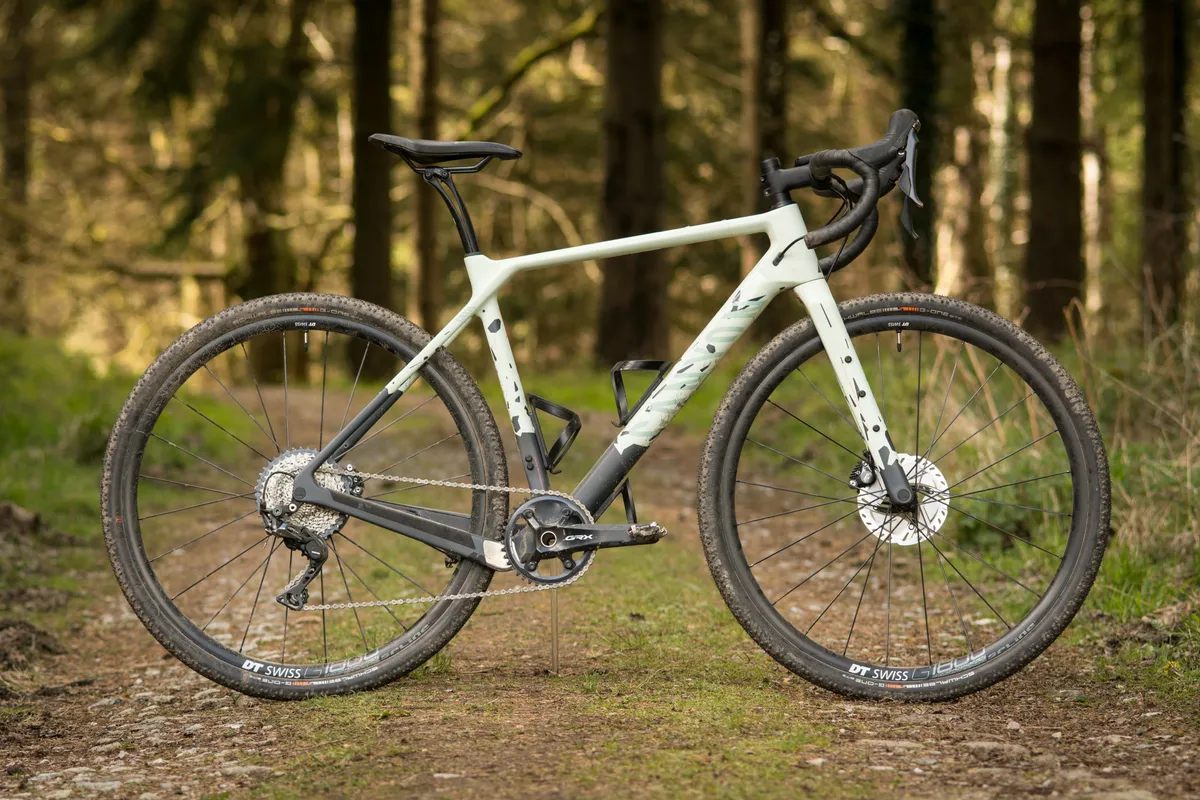
- £2,949 / $2,849 / €2,699 / AU$4,249 as tested
- Pros: Versatile carbon frameset; great spec; well thought out geometry
- Cons: Gearing might not be low enough for some; Canyon-specific mudguard mounts
The Canyon Grizl is a burlier version of the Canyon Grail, which is also one of the best gravel bikes. The Grizl has clearance for 50mm tyres, mounts for fenders and bags, and long geometry – all working together to make it an ultra-versatile bike.
The bike has a good value-for-money spec, with a Shimano GRX groupset, DT Swiss wheels, a Canyon VCLS leaf-spring seatpost and a Fizik Terra Argo saddle.
The Grizl is happy on tarmac, but really shines off-road, especially on dirt trails and gravel singletrack.
The 1x drivetrain might not be the desired choice for all, but there are 2x Grizls in Canyon’s range.
One drawback with this bike is the mudguard mounts are specific to Canyon.
- Read more: Canyon Grizl CF SL 8 1by review
3T Extrema Italia

- £8,941 / $10,699 / €10,349 / AU$13,852 as tested
- Pros: Impressive descending characteristics; exciting handling; great tyre clearance; UDH dropout
- Cons: Can only use 3T handlebar; longer-travel dropper would be a good addition
The 3T Extrema Italia sits at the more aggressive side of the gravel spectrum, bridging the gap between gravel and light cross-country mountain biking.
It performs incredibly well on the descents, with nimble and confident handling helping to tame singletrack trails.
This doesn't come at the cost of climbing performance, with the Extrema Italia having a rigid feel that inspires hard efforts.
The bike comes with 50mm-wide tyres, and appears to be future-proofed by using SRAM's UDH dropout – although this limits you to electronic groupsets only.
- Read more: 3T Extrema Italia review
Cannondale Topstone Carbon 1 Lefty AXS
SQUIRREL_TEXT_13201337

- £6,350 / $6,500 / €6,999 as tested
- Pros: Great handling; impressive comfort, especially on technical terrain; UDH dropout; big tyre clearance
- Cons: Only small improvements over previous model
The Topstone Carbon 1 Lefty AXS is class-leading on technical terrain, with the Lefty Oliver fork offering supple support on rowdy trails.
We found the Topstone to have great handling, with nimble and precise cornering easy to perform on singletrack trails.
The Topstone Carbon 1 Lefty AXS comes well-specced, with SRAM's Rival AXS groupset and Reserve 40 I 44 GR Carbon wheels.
Tyre clearance has increased to 52mm on the new model and the addition of frame storage increases versatility, although we aren't sure if these minor improvements justify upgrading from the previous generation.
- Read more: Cannondale Topstone Carbon 1 Lefty AXS
SQUIRREL_13201337
Giant Revolt Advanced Pro 0
SQUIRREL_TEXT_13152036

- £5,599 / $7,000 / €6,800 / AU$8,499 as tested
- Pros: Great spec; good handling; versatile
- Cons: No UDH compatibility
The Revolt Advanced Pro 0 is a versatile all-rounder that provides a fast and composed ride that helps you cover miles easily.
A relaxed geometry gives the Revolt a superb endurance-bike like feel on the road, with the double chainring up-front adding good versatility.
Plenty of mounts are present on the frame, enabling you to add mudguards, cages and racks to the Revolt for bikepacking or touring.
We found the lack of a Universal Derailleur Hanger a little disappointing because it means the bike isn't compatible with SRAM's Transmission groupsets.
- Read more: Giant Revolt Advanced Pro 0 review
SQUIRREL_13152036
GT Grade Carbon Pro LE
SQUIRREL_TEXT_13114833

- £3,600 / $4,200 / €3,800 as tested
- Pros: Great handling; competitive price; wide gear range
- Cons: Messy cables; tyres lack mud grip
The GT Grade Carbon Pro LE won the gravel category in our Bike of the Year 2024 awards on account of its excellent handling, well-chosen spec and forward-thinking geometry.
GT's premium gravel bike costs £3,600 / $4,200 but presents good value compared to its competitors. Its 1x12-speed Shimano GRX groupset, carbon seatpost, and WTB wheels and tyres make up a quality build.
The Grade Carbon Pro LE's rigid yet compliant frame is another strong suit. Unlike the Grade Carbon X, which uses suspension, the Pro LE relies on flexion from its innovative 'third triangle' between the seat stays and top tube to smooth out bumps.
GT has improved the Grade Carbon Pro LE's stability by lowering the stack and increasing reach, which a shorter stem partially counteracts. But the handling remains sharp enough when you put the hammer down on less technical terrain.
The only negatives are the untidy cable routing at the front of the bike and the tyres's poor mud performance.
- Read more: GT Grade Carbon Pro LE review
SQUIRREL_13114833
Lauf Seigla Weekend Warrior
- Buy now from Lauf Cycles ($3,490)

- £3,890 as tested
- Pros: Inspired geometry; grit fork smooths surfaces; wide tyre clearance up to 29 x 2.25 in
- Cons: Wide bottom bracket limits crank choice; fork chassis can twist
Lauf’s Seigla has taken all of the best aspects from its True Grit gravel race bike and improved it, with increased tyre clearance and frame compliance.
The third-generation Grit leaf-sprung fork offers class-leading damping. Although you can feel a little bob from the fork, it’s a fairly efficient climber. Heading downhill, the Seigla is composed and takes the sting out of the worst bumps.
There are some quirks in the frame’s design, which although aren’t a negative, are certainly something to consider for your style of riding. The Seigla isn’t compatible with front derailleurs and it uses a wider BSA73 bottom bracket shell, limiting crankset options.
- Read more: Lauf Seigla Weekend Warrior review
- Buy now from Lauf Cycles ($3,490)
Orbea Terra M21e Team 1X
SQUIRREL_TEXT_13111651

- £5,358 / $5,874 / €5,364 as tested
- Pros: Compliant and comfortable; quick handling; fast
- Cons: Wheels warrant an upgrade
The Orbea Terra M21e Team 1X is one of the most appealing and fast gravel bikes on the market, offering all-round capability, comfort, confident handling and last but not least, fun.
The lightweight frame doesn’t drag on long climbs and would be a good choice for gravel racing. But it also smooths out rough terrain and our tester felt it could be a great companion on technical sections. To boot, there are plenty of mounts for bikepackers.
The Terra is held back by its alloy wheels. A lighter, faster set of gravel wheels would complete this carbon gravel bike.
SQUIRREL_13111651
Rondo Ruut CF1 G2

- £4,199 / €4,999 as tested
- Pros: Great handling; high levels of comfort; adjustable geometry adds versatility; good spec
- Cons: Dividing looks; tyres not grippy enough for wet days
The Ruut CF1 G2 has a distinct silhouette thanks to its soft-tail design, which adds good comfort over bumpy gravel roads.
Despite this, the Ruut has a stripped-back ride feel that feels fast on smooth gravel and tarmac.
The adjustable geometry adds good versatility, while Rondo has put together a decent spec, including SRAM's Rival AXS.
While the tyres are great for dry summer days, they meet their match when things get wet.
- Read more: Rondo Ruut CF1 G2 review
Argon 18 Dark Matter Force AXS XPLR
SQUIRREL_TEXT_13177253

- £5,500 / $5,800 / €6,300 as tested
- Pros: Good spec; confident handling; lots of frame mounts
- Cons: Not race-bike fast
The Argon 18 Dark Matter Force AXS XPLR will double as a bikepacking and gravel race bike if you prioritise compliance and practicality over all-out speed.
Dedicated racers may prefer something with faster handling, because the Dark Matter's geometry mirrors an endurance road bike.
But the advantage is that the Dark Matter should prove more comfortable over longer distances – it could fit the bill for multi-day gravel races.
Along with plenty of frame bosses, the Dark Matter is specced with a quality Hunt Limitless Gravel Disc wheelset, sensibly grippy Vittoria Terreno Mix tyres and a fantastic SRAM Force AXS XPLR groupset.
- Read more: Argon 18 Dark Matter Force AXS XPLR review
SQUIRREL_13177253
Canyon Grail CF SLX 8 Di2

- £4,799 / $4,999 / €5,099 / AU$7,649 as tested
- Pros: Unrivalled value; rapid on smoother surfaces; deft handling
- Cons: Could be more compliant
Canyon has simplified the design of its latest Grail race bike, most notably by swapping the divisive Hover bar for an integrated cockpit.
The German brand has also relaxed the Grail's geometry, improving its poise on tricky trails, without dulling its race-bike characteristics.
What's more, tyre clearance has increased from 40mm to 42mm, and the frame is a touch lighter and now has integrated storage. Canyon also claims the whole bike is more aerodynamic.
Built around a Shimano GRX Di2 groupset and rolling on DT Swiss GRC1400 Spline carbon wheels, the spec of the Grail is unmatched at £4,799 / $4,999.
But the Grizl may be a better choice for riders looking for a do-it-all Canyon gravel bike. The Grail frame has few mounting points and can feel harsh over bumps.
- Read more: Canyon Grail CF SLX 8 Di2 review
ENVE MOG (Shimano GRX Di2 build)
SQUIRREL_TEXT_13076612
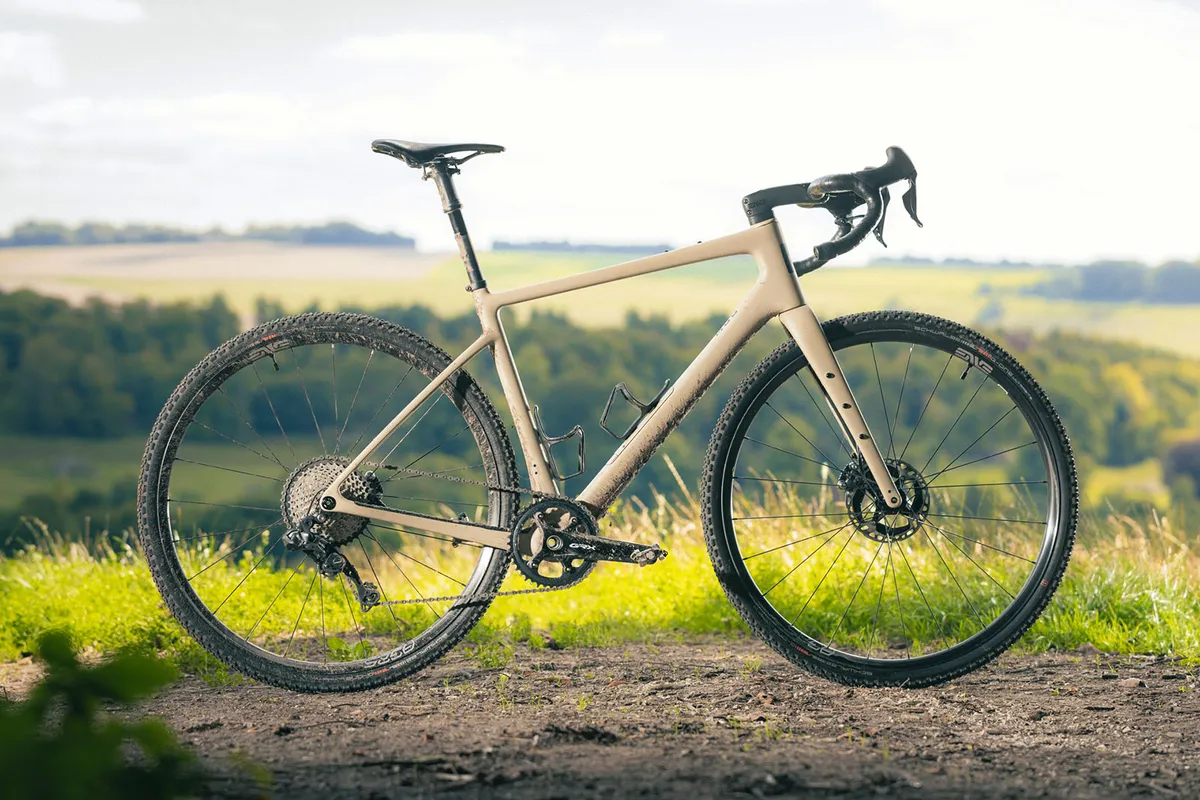
- £10,500 as tested / £5,500 / $5,500 for frame module
- Pros: Nimble and capable handling; well-balanced
- Cons: Expensive and no off-the-peg builds
The ENVE MOG is positioned between a gravel race bike and more adventure-oriented options. Like its Custom Road and Melee road siblings, the MOG is sold as a frame module, so you'll need to add a gravel groupset, wheels and tyres. That means there aren't any off-the-shelf builds.
The carbon fibre frame has clearance for 50mm gravel bike tyres and it features the 'Cargo Bay', ENVE's term for its down tube storage, with 600ml capacity.
We were very impressed by its off-road manners – it's a quick bike but feels composed enough when snaking through gnarlier terrain. It's a much more rounded bike than expected, more akin to the Giant Revolt X or Cannondale Topstone than racier rigs.
This example build pairs a Shimano GRX Di2 groupset with ENVE AG25 wheelset and finishing kit, including its G-Series inverted dropper post.
- Read more: ENVE MOG (GRX Di2 build) review
SQUIRREL_13076612
Guava Spot Force AXS

- £4,950 / €5,299 as tested
- Pros: Fast-feeling; stable steering; plenty of customisation; decent price
- Cons: Not great on technical trails; 1x only
The Guava Spot Force AXS has a well-thought-out geometry that makes it a truly versatile all-rounder.
We found the bike fast on a variety of surfaces, with secure handling giving a good feeling of control on loose ground.
It struggles a little on more technical terrain, with the bike not being as capable as others on gnarlier trails.
Guava has given the Spot plenty of mounts for bikepacking, making it an excellent do-it-all bike.
- Read more: Guava Spot Force AXS review
Ribble Gravel SL Pro GRX Di2
SQUIRREL_TEXT_13178134

- £4,959 as tested
- Pros: Impressive value for money; fast and forgiving ride; great spec
- Cons: Not much bar-combo choice; not as capable on more technical terrain
The Gravel SL Pro is fast and forgiving on open gravel roads, covering miles well and in comfort.
It offers the value for money we've come to expect from Ribble, with Shimano GRX Di2 and Zipp's 303S wheels featuring on this top-tier build for £4,959.
We found the Gravel SL Pro was challenged on more technical terrain but excelled on tarmac, offering endurance road bike levels of efficiency.
- Read more: Ribble Gravel SL Pro GRX Di2 review
SQUIRREL_13178134
Ridley Grifn RS
SQUIRREL_TEXT_13153161

- £6,715 / €7,398 as tested
- Pros: Great specification; impressive on smooth gravel; lightweight
- Cons: Not the best on rougher terrain
The Grifn RS is incredibly quick on smooth, open tracks with high levels of efficiency and comfort helping to pass the miles quickly.
Ridley has specced the Grifn RS well, with the bike featuring SRAM Force XPLR AXS and carbon DT Swiss GRC1400 wheels.
We found the Grifn RS to come a little unstuck on chunkier terrain, where its narrow tyres and agile nature make it tricky to handle.
- Read more: Ridley Grifn RS review
SQUIRREL_13153161
Santa Cruz Stigmata Force-1x AXS RSV
SQUIRREL_TEXT_13114835

- £7,000 / $7,699 as tested
- Pros: Remarkable spec
- Cons: Frame is quite rigid and lacks fittings
The latest Santa Cruz Stigmata has moved further away from its cyclocross racing origins, morphing into an MTB-influenced adventure bike.
Clearance for wider gravel tyres, added front suspension and a dropper post, and slackened geometry have made the Stigmata more technically capable.
Costing £7,000 / £7,699, the Stigmata sits at the high end of the gravel bike market. But its brilliant SRAM Force AXS groupset, lightweight Reserve wheels and RockShox Reverb AXS XPLR dropper provide a lot of bang for your buck.
However, the frame is short of fixtures and fittings to attach bikepacking bags, for example, which diminishes the Stigmata's versatility.
- Read more: Santa Cruz Stigmata Force-1x AXS RSV review
SQUIRREL_13114835
Specialized Diverge STR Expert
SQUIRREL_TEXT_13111639

- £7,500 / $7,500 / €7,550 as tested
- Pros: Plush riding in the saddle; all-round capability
- Cons: Low spec for the high price
Another positive is that the Diverge STR Expert’s geometry is suitable for a broad spectrum of gravel riding, from bridleway bashing to pacy gravel racing.
The middle-of-the-range SRAM Rival and GX Eagle components are discordant on a £7,500/$7,500 bike. The frame’s complexity does offer some mitigation for these cost-cutting choices.
The Specialized Diverge STR Expert will please fans of fancy tech and out-there looks, but the Specialized Diverge Comp Carbon might be a better – more affordable choice – for some.
- Read more: Specialized Diverge STR Expert review
SQUIRREL_13111639
Best aluminium gravel bikes
Aluminium alloy frames are light, robust and have a relatively low manufacturing cost. This makes aluminium gravel bikes a great choice if you’re looking to dip your toe into the world of gravel because they deliver big performance for their relatively low price.
Many of the best gravel bikes have aluminium frames and can compete with carbon or titanium bikes, so it’s not to be overlooked even for more performance-orientated people.
Below is a selection of the best alloy gravel bikes we have tested, with a particular focus on budget gravel bikes. Our complete buyer’s guide to the best aluminium gravel bikes covers a broader range of price points.
SQUIRREL_13101377
Focus Atlas 6.8
SQUIRREL_TEXT_13161896
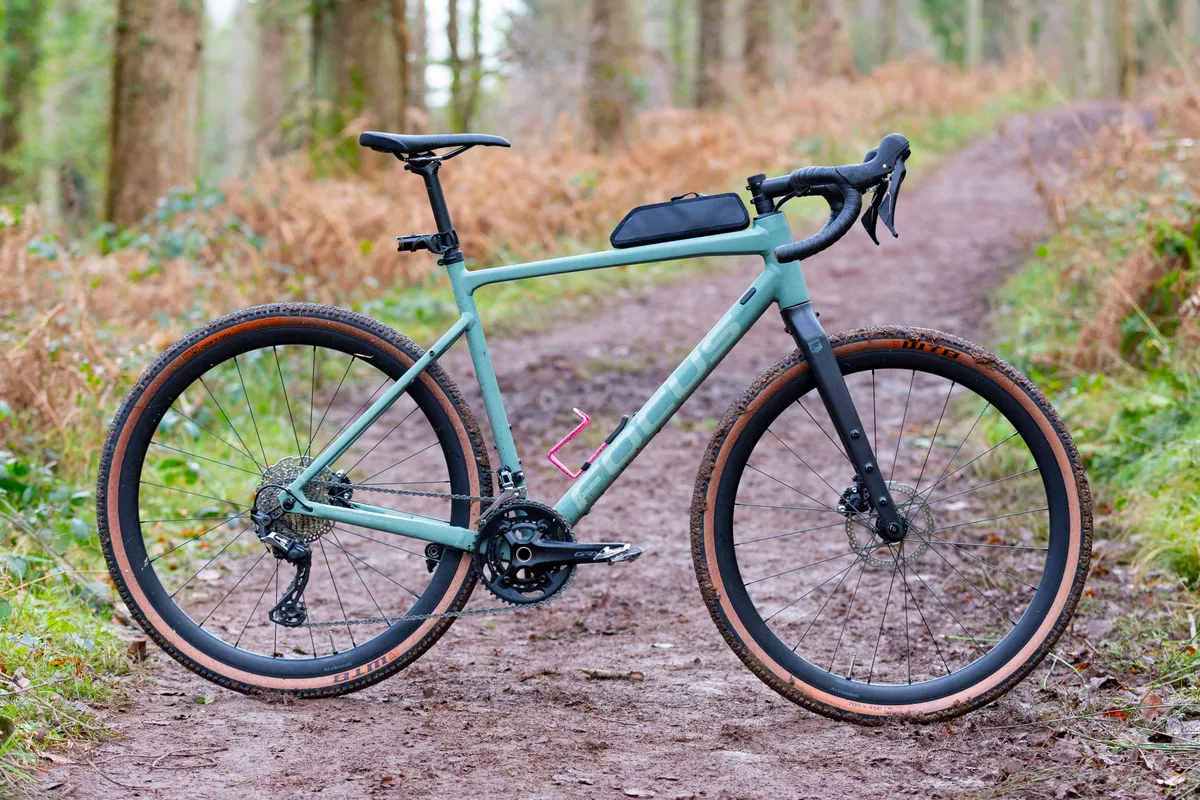
- £1,899 / €1,999 / AU$3,099 as tested
- Pros: Touring and bikepacking-friendly; progressive geometry; excellent-value package
- Cons: Boost spacing limits wheel choice; top tube bag rattles
The Focus Atlas 6.8 is an entertaining and very capable bike straight out of the box. It’s a particularly talented off-roader thanks to progressive geometry that keeps things notably calm even when the going gets steep or rough.
It’s great to see a mix of Shimano’s excellent GRX RX600 and RX800 groupset components at this price.
The stock wheels are tough and form a great foundation for WTB’s 45mm wide Riddler tyres, though the Boost axle spacing could make potential upgrades more complicated.
Focus has included plenty of mounts and provisions for luggage and accessories, making the Atlas ideal for bikepackers.
- Read more: Focus Atlas 6.8 review
SQUIRREL_13161896
Kinesis Tripster AT+
SQUIRREL_TEXT_13137579
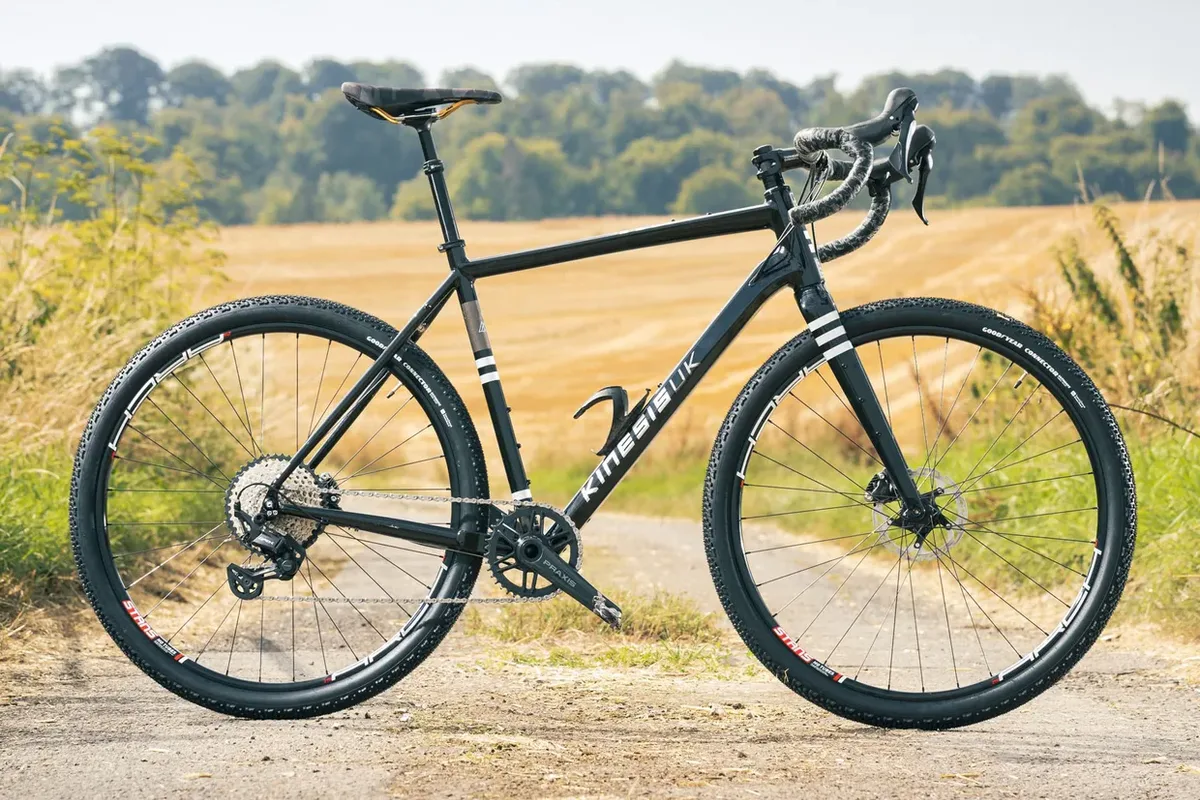
- £3,400 as tested
- Pros: Capable on all types of gravel; well built; great handling characteristics
- Cons: Not the lightest; frame sizing requires some thought
The Tripster AT+ offers impressive all-round handling that’ll appeal to lots of gravel and all-road riders.
We found the bike catered to both extremes of gravel riding, excelling on smooth tarmac and downhill technical trails usually reserved for mountain bikes.
This complete build from Upgrade see's a decent spec featuring quality parts from Thomson, Stan’s, DMR and Praxis.
It is on the heavy side, although you could build it up with lighter parts.
- Read more: Kinesis Tripster AT+ review
SQUIRREL_13137579
Cannondale Topstone Alloy 2
SQUIRREL_TEXT_13084397
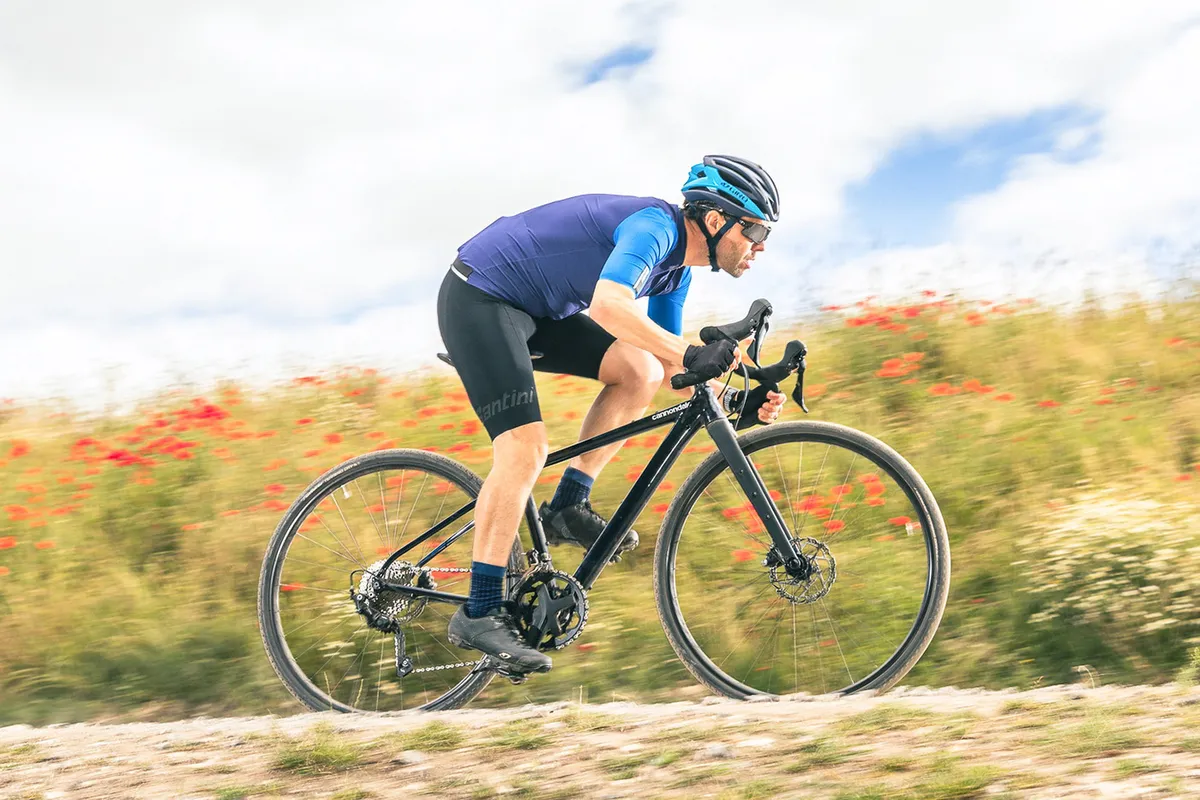
- £1,800 / $1,925 / €2,199 / AU$3,199 as tested
- Pros: Accessory mounts boost versatility; great tyres for light gravel and road riding
- Cons: 10-speed groupset; relatively narrow tyres
The Cannondale Topstone Alloy gravel bike was updated in mid-2022 with dropped seatstays, additional accessory mounts and new builds.
We tested the mid-range Cannondale Topstone Alloy 2, which is built around a Shimano GRX 400 groupset.
With loads of accessory-fitting options and ample tyre clearance (45mm), this is a bike that could quite reasonably be turned to nearly all riding duties, including doubling as a winter road bike or commuter bike.
However, the stock tyres are on the narrow side if you want to explore more technical gravel/off-road trails, though that’s nothing an upgrade to wider rubber can’t sort.
- Read more: Cannondale Topstone Alloy 2 review
SQUIRREL_13084397
Genesis Fugio 30
SQUIRREL_TEXT_13178150

- £2,000 as tested
- Pros: Great looks; fun; competitive price
- Cons: Downgraded parts; slow on tarmac
The original Genesis Fugio had a steel frame, but this latest version is made from aluminium.
The result is a gravel bike that has shed close to half a kilogram and can cover big miles, providing bundles of fun in the process.
The bike has clearance for 57mm-wide gravel tyres and, paired with its relaxed geometry, it takes seriously rough terrain in its stride.
This means it’s not the fastest gravel bike on tarmac, but that’s not an issue here. The Fugio 30 is a bike for exploration, the journey and riding terrain beyond your comfort zone.
- Read more: Genesis Fugio 30 review
SQUIRREL_13178150
Best titanium gravel bikes
Titanium has become a popular material among the best gravel bikes thanks to its inherent properties.
The metal is more resistant to fatigue than aluminium alloy, roughly half the weight of steel and more flexible than carbon fibre, making it a good choice for riders who value performance but want a sleek-looking forever bike that can stand up to the demands of riding off-road.
You can also check out our full list of the best titanium gravel bikes for a complete overview.
J Laverack GRiT

- £6,325 as tested
- Pros: Build quality; handling; performance; comfort
- Cons: Squeaking brakes; need to up-spec the bike to get the most from it
Our tester found the J Laverack GRiT to be the closest to a “forever bike” thanks to its dependable, comfortable, quick and fun ride – not forgetting its high build quality.
It might not be a surprise that a bike for life comes with a pretty high price tag. The GRiT we tested cost more than £6,000 with Hope brakes, carbon rims and a Shimano GRX groupset.
But in the scheme of things, J Laverack provides custom-specced builds that come in lower than some brands’ second-tier bikes.
You may not want to customise a build to get the most from a bike. However, along with the Hope brakes squeaking, that’s the only real drawback we can find with this bike.
- Read more: J Laverack GRiT review
Mason Bokeh Ti GRX Di2
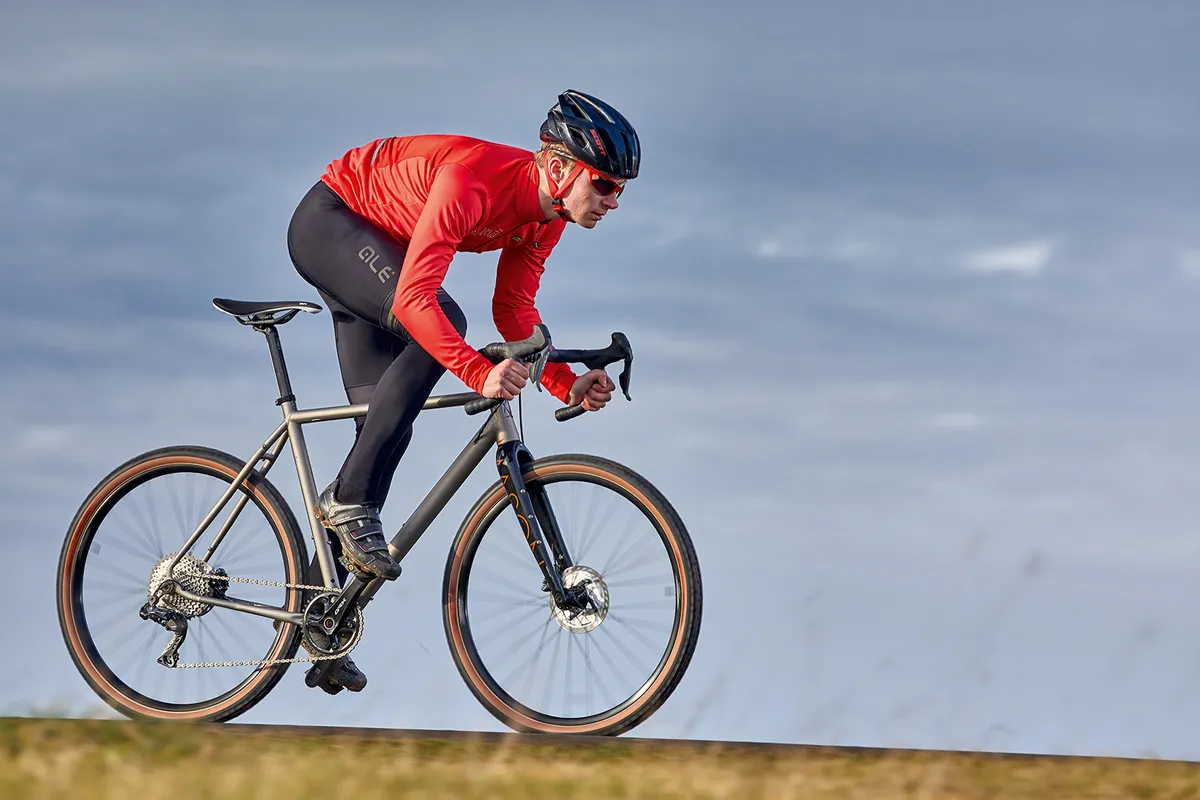
- £6,195 as tested
- Pros: Sublime frame with lovely ride quality and great kit
- Cons: Chunky tyres make it a little pedestrian on the road
We’ve long been big fans of Mason’s aluminium gravel bike, the Bokeh, so we were pleased to see much of what we loved about that bike has translated across to the titanium version.
There are smart details galore, from the numerous mounts for bottles, racks and mudguards, to the MultiPort cabling system that ensures compatibility with all kinds of drivetrains.
As you’d expect, the ride quality is also excellent. The frameset, custom Mason/Hunt wheels and chunky tyres make for a wonderfully composed ride off-road.
The only issue is that it comes at a relatively high price, but if you’re willing to part with this much cash, you’re unlikely to be disappointed.
- Read more: Mason Bokeh Ti GRX Di2 review
Reilly Gradient
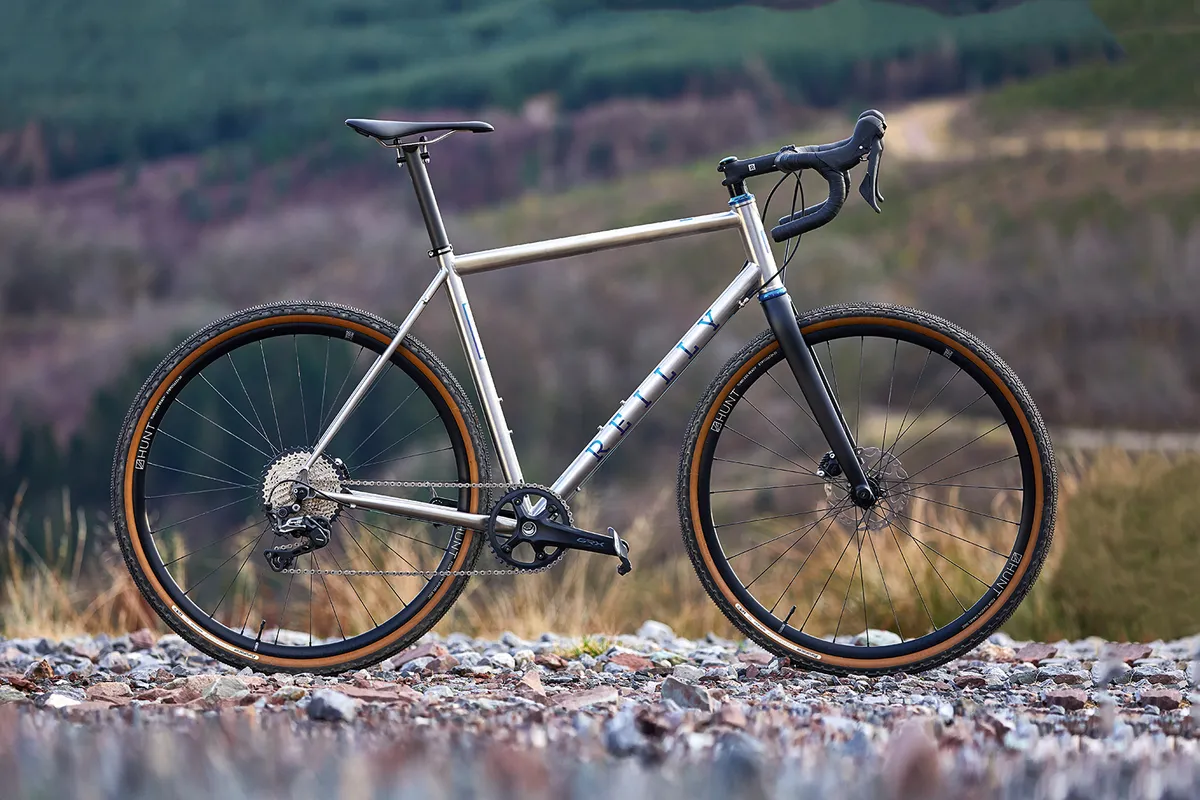
- £3,249 as tested
- Pros: Well priced for titanium; clever build kit; comfortable and quick
- Cons: Gears needed adjusting after a few days’ riding
The titanium Reilly Gradient frame is not only a thing of beauty, the ride it delivers also manages to hit the sweet spot between comfort and speed.
The well-considered build puts Hunt’s 1,629g 4Season tubeless-ready alloy gravel wheelset at either axle and it’s driven and stopped by Shimano’s excellent gravel-specific GRX groupset.
It all adds up to a ride that feels road-bike precise on tarmac, yet controllable off it. It’s reasonably priced too, particularly for a titanium bike that’s built in the UK.
- Read more: Reilly Gradient review
Moots Routt 45
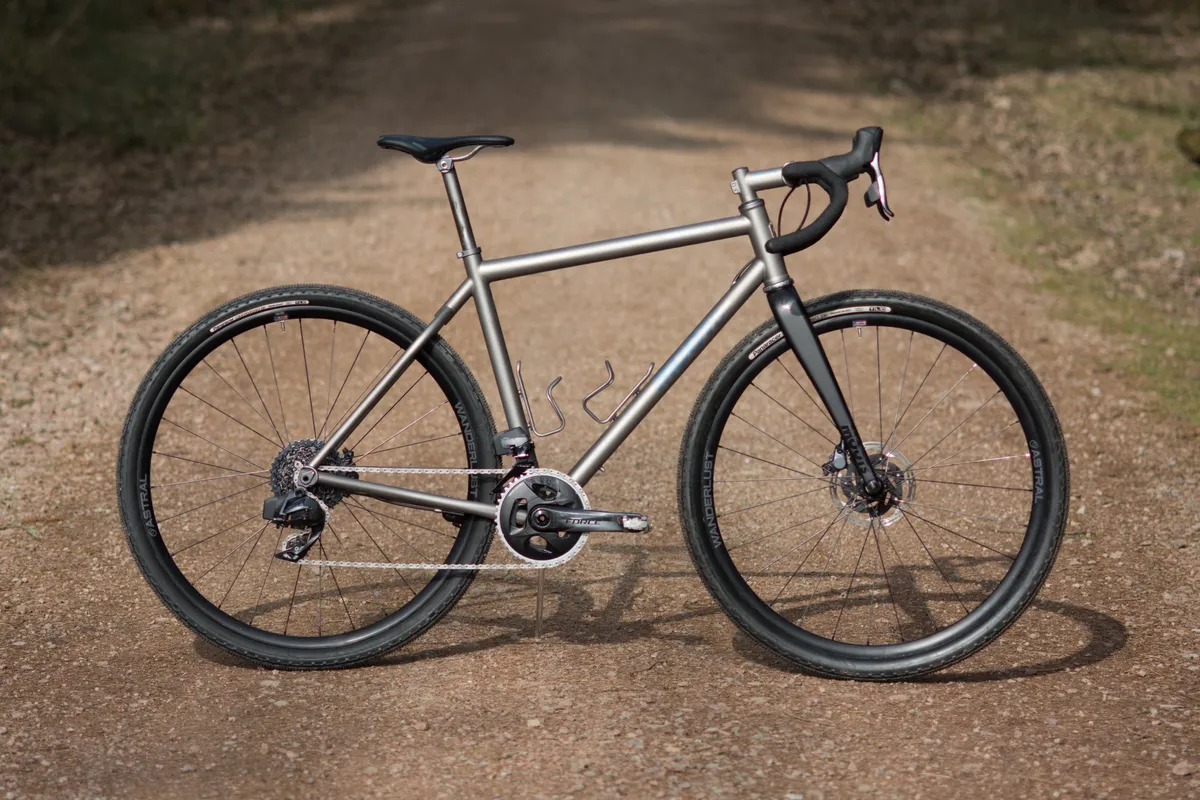
- £5,600 / $4,999 (frameset only) as tested
- Pros: Super-smooth ride and stunning finish; 700x50mm tyre clearance
- Cons: That price tag
You can tell the Moots Routt 45 is a cut above mass-market titanium frames straight away.
Handmade in America, the welds are super-neat and the finish looks expensive.
Despite being available as complete builds in the USA, in the UK Moots bikes are currently only available as framesets.
Riding the Routt 45 with SRAM Force eTap AXS, a Chris King headset and an ENVE bar, the Routt 45 proved super-smooth to ride on- and off-road with plenty of stiffness when pedalling.
The price puts it in the territory of the most expensive bikes. But a bike like this will often be heart over head, and with the right finishing kit, it won’t leave you disappointed.
- Read more: Moots Routt 45 review
Best steel gravel bikes
Steel is a strong and relatively flexible metal. This means the best steel gravel bikes will do a lot of work to absorb the vibrations of the surface beneath you.
Paired with wide gravel tyres, it creates a smooth and comfortable ride. It isn’t the lightest material, but when comfort and durability are the most important factors you can’t go far wrong with steel.
Marin Nicasio +
SQUIRREL_TEXT_13111643
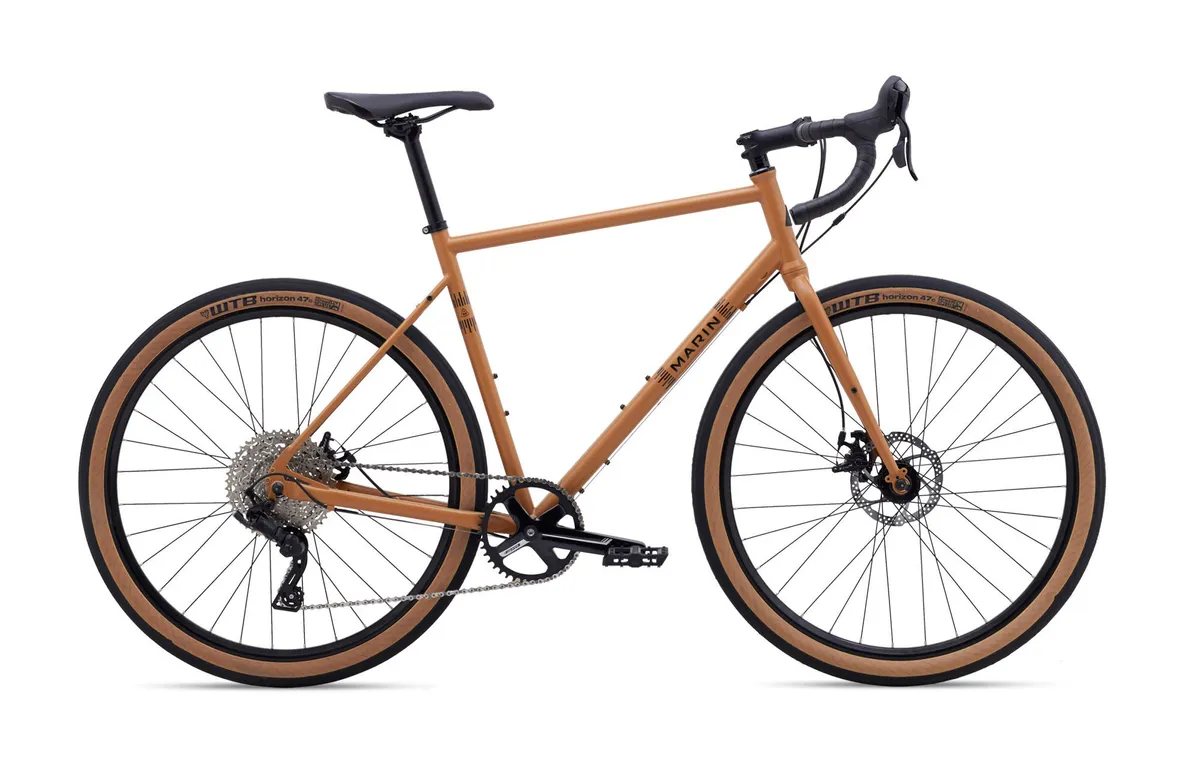
- £845 / $899 / €899 as tested
- Pros: Amazing value; ideal for bikepacking
- Cons: Hard to fault at this price
The Marin Nicasio + proves that simplicity is key when you’re working on a budget. It would be easy to discard this bike based on its simple steel frame and fork, and relatively high weight, but that would be a real mistake.
Yes, you’ll feel the weight on steeper climbs, but the cleverly chosen spec and excellent geometry make this bike a treat as soon as the going gets rough.
This is one of the most fun bikes to ride of its kind and yet it retails for less than the frameset of many of the best gravel bikes.
- Read more: Marin Nicasio + review
SQUIRREL_13111643
Surly Grappler
SQUIRREL_TEXT_13111644

- £2,350 / £1,949 as tested
- Pros: Smooth and stable on tricky terrain; high-quality frame
- Cons: Lesser brakes; drivetrain arguably not up to Shimano or SRAM quality
The Surly Grappler is noticeably taller than many of the best gravel bikes and also has a long reach. While our tester was sceptical of this geometry at first, they found it to create a brilliant bike that's planted, solid and ideal for exploring.
The 27.5x2.5in Teravail Ehline tyres swallow up rocks and roots, while the dropper post turns it into a wicked descender.
In typical Surly style, the frame is high quality and has plenty of mounts, so you can make the most of the Grappler’s long-distance potential.
Arguably, the Microshift drivetrain and weak Tektro brakes aren’t up to the quality or performance of a Shimano or SRAM groupset.
- Read more: Surly Grappler review
SQUIRREL_13111644
How we test gravel bikes

We test gravel bikes on a range of surfaces, from paved roads to light single-track trails and of course in their natural environment on gravel roads.
Our team has reviewed hundreds of gravel bikes and has plenty of experience in separating the good from the bad.
We use long test cycles to ascertain how the bikes live up to real-world riding and go out in wide-ranging conditions to see how they perform in the wet and dry.
Ultimately, our gravel bike reviews are based on the following criteria:
- Handling characteristics – how does the bike handle and does it inspire confidence on descents?
- Specification – does the bike feature decent components that will live up to the rigours of gravel riding?
- Performance against brand claims – does the bike perform well on the intended use?
- Value vs competition – is the bike a good deal compared to others in the market?
Why you can trust BikeRadar
BikeRadar has been an authority on bikes and cycling tech since its inception in 2007, delivering the world’s best riding advice.
We have experts testing all types of bikes, parts, clothing and accessories, from road, mountain and gravel bikes to commuting, bikepacking and electric bikes.
Our reviews are always editorially independent – with no exceptions. Our reviewers comprehensively test all products in the real world, always reflecting on performance, value and the wider market when delivering their verdicts and review ratings.
We have more than 15,000 product reviews available at your fingertips, as well as expert buying, maintenance, training, skills, health and fitness advice.
Our annual Bike of the Year test is an industry benchmark and the BikeRadar team consists of some of the most experienced riders and testers in the business.
What is a gravel bike?
A gravel bike is a drop-bar bike designed to be ridden on a wide variety of surfaces and not just gravel – even if this is where gravel riding did originate.
The best gravel bikes look a lot like traditional road bikes, but there are four key features that usually distinguish them.
Wider tyres
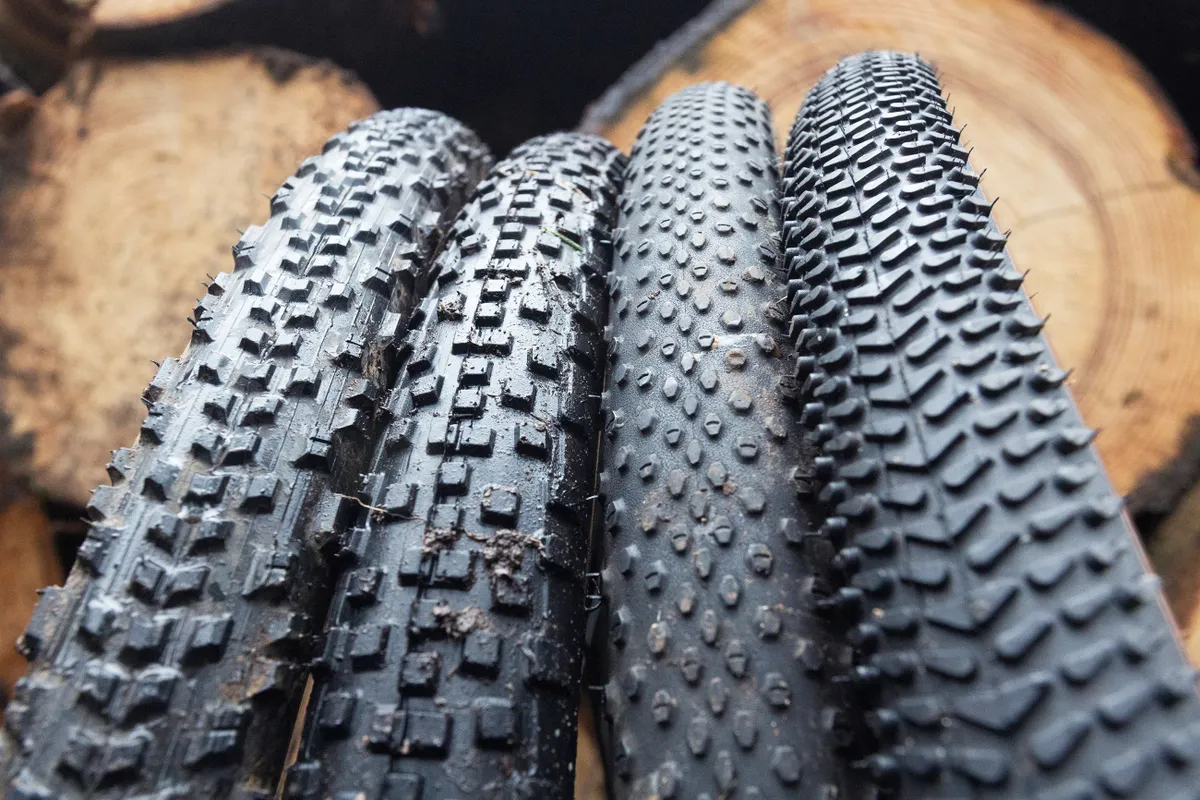
First and foremost, gravel bikes have wider tyres. Since these bicycles are designed to traverse miles of unpaved roads, their tyres are substantially larger. Likewise, mud clearance is also a concern in these conditions.
Tyre widths range anywhere from 30mm to 48mm. In addition to 700c wheels, it is also common to see smaller-diameter 650b wheels used with higher-volume tyres. Many of the best gravel bike tyres feature a fast-rolling centre tread with knurling or side knobs to improve cornering ability on mixed surfaces.
Tubeless tyres are also commonly found on gravel bikes because the latex tubeless sealant provides a degree of insurance against punctures.
Geometry
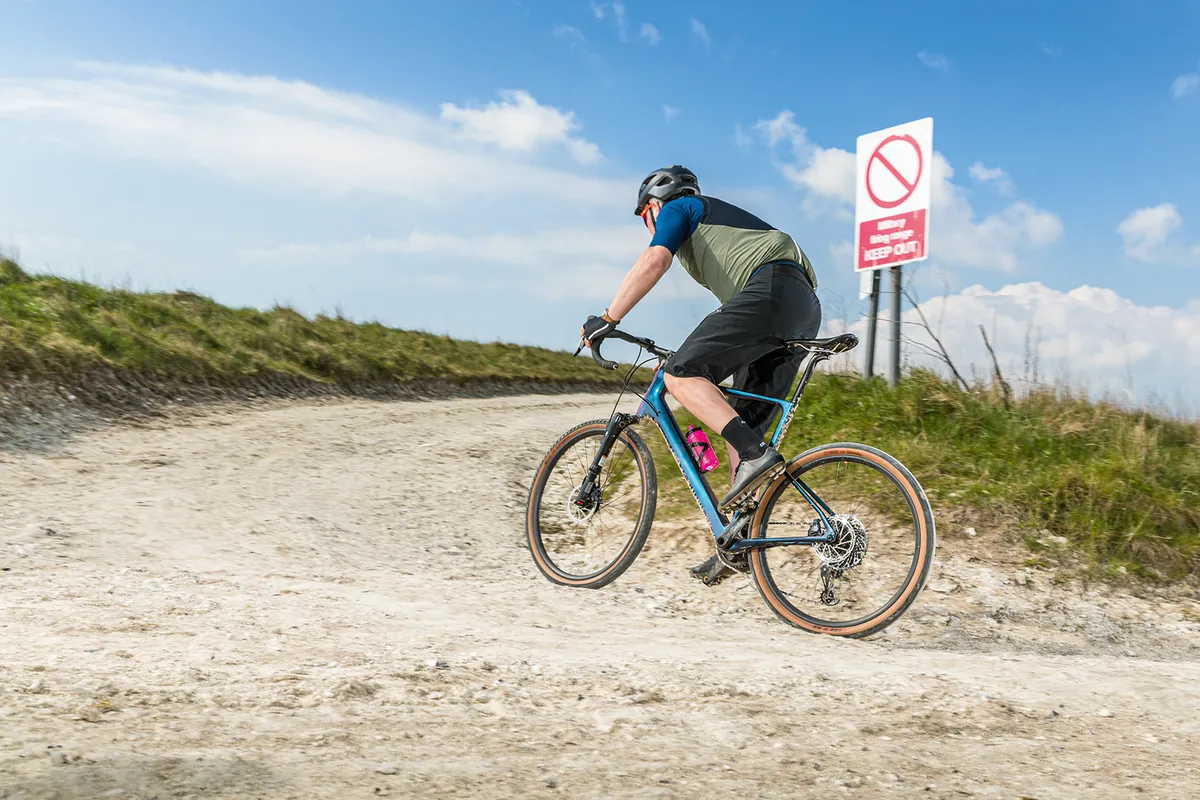
In addition to wider tyres, gravel bikes have geometry that favours stability and comfort.
The best gravel bikes have a longer wheelbase than most road bikes thanks to longer chainstays and slacker head-tube angles.
Head tubes are generally taller as well, placing the rider in a more relaxed, upright position. Bottom brackets are often lower, which gives the rider the sensation of riding in, rather than on the bicycle.
The end result of these geometry differences is a more comfortable, confidence-inspiring and forgiving ride than you would find in a typical road bike.
The best women's gravel bikes follow the same principles in terms of geometry but are often tailored to better suit women riders.
Frame features
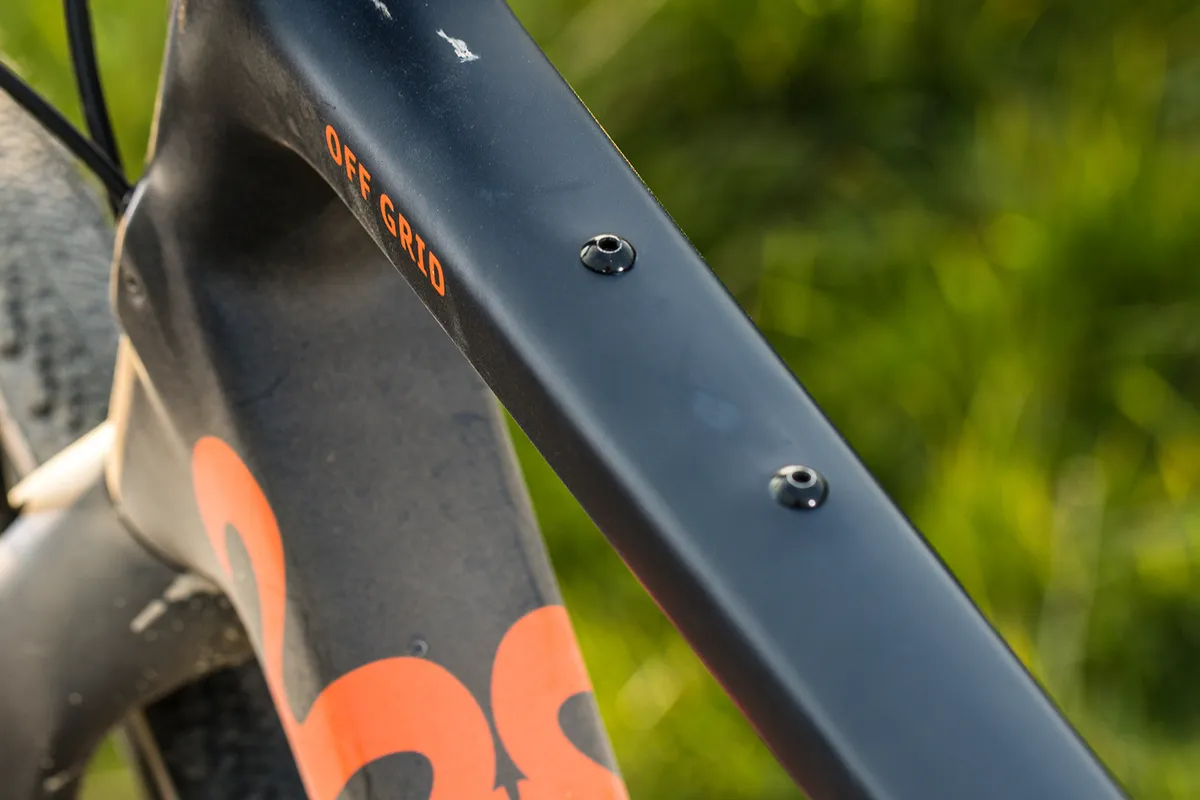
Another thing you'll usually find on gravel bikes that road bikes don't have is extra mounting points for luggage. That allows them to be used for bikepacking or just lets you add a third water bottle for long rides in the outback where water sources may be scarce. Likewise, there are often mounts on the top tube for a feed bag.
Gravel bikes also usually have mounts for a rack and mudguards/fenders, so they can do double duty as poor weather road bikes.
There's a newer category of gravel race bikes though, like the Pinarello Grevil F and the Cervélo Áspero, which abandon their bikepacking pretensions and just have a fairly standard set of road-type mounts, maybe with extra bottle cage bosses under the down tube. They'll have a more racy geometry, more like a road bike, and often include aero features and tube profiles.
Handlebars and stem
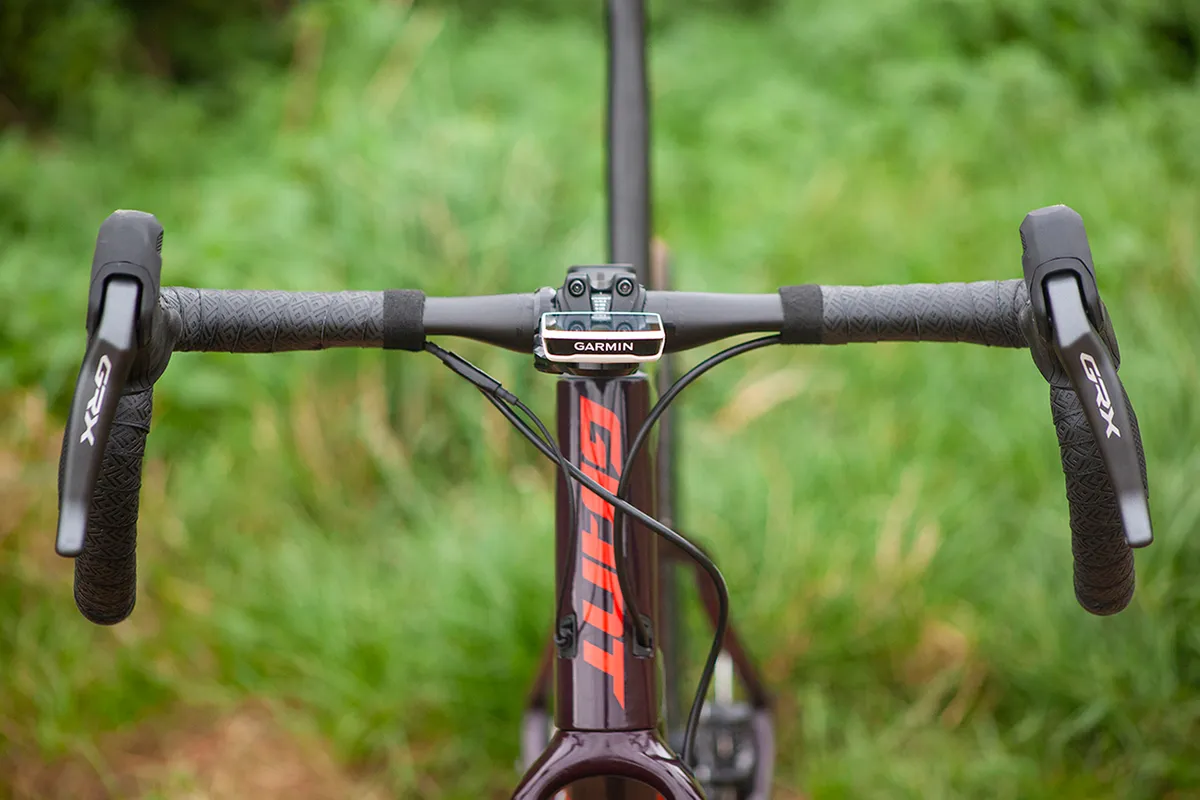
Gravel bikes typically have a shorter stem and wider handlebars than road-going drop bar bikes. That mirrors mountain bike geometry and leads to a bike that's more easily manoeuvred over variable terrain.
The handlebars usually have a flare to them, where they widen out from the tops to the drops. That gives you more control when descending in the drops. It also means that if you decide to fit a handlebar bag, there's more space to grab the drops without the bag getting in the way.
Gearing
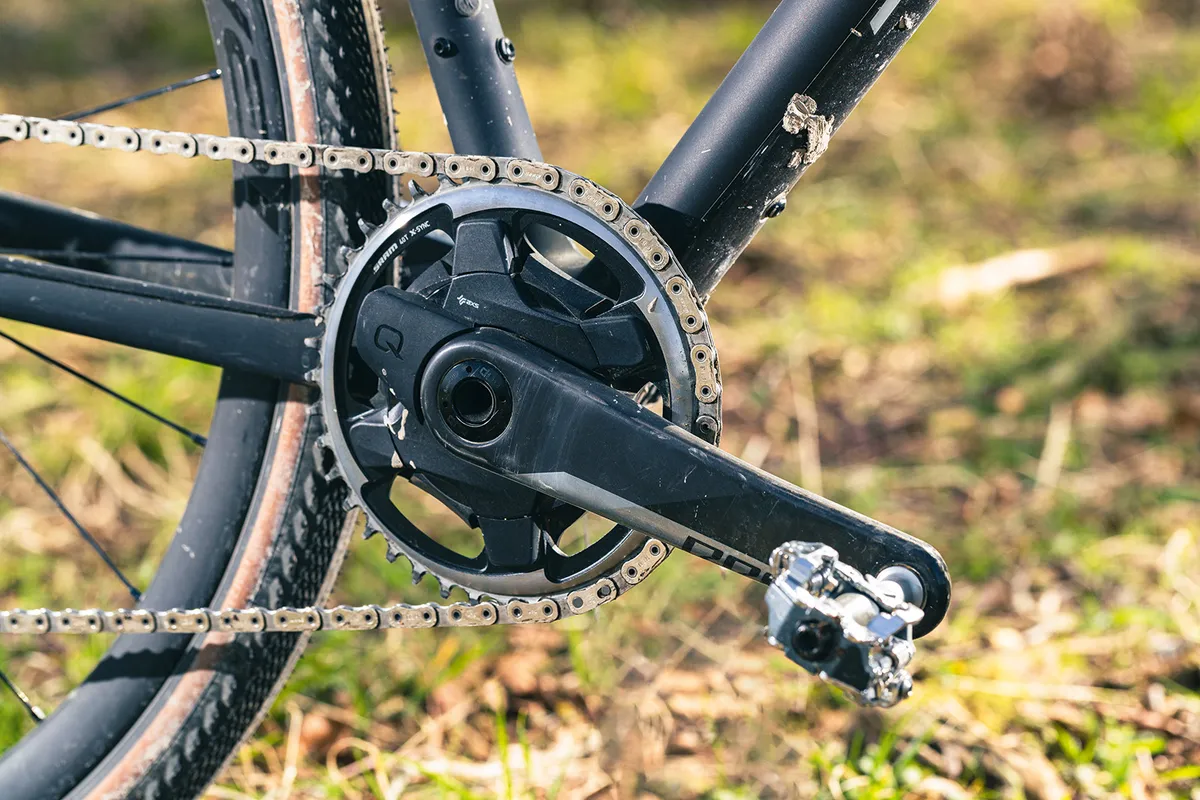
Gearing is another area where gravel bikes diverge from the pack.
The rise of gravel bikes has, in turn, been accompanied by the arrival of gravel-specific groupsets. While early gravel bikes might have featured road bike groupsets with compact cranksets, the latest gravel groupsets – including Shimano GRX, Campagnolo Ekar and SRAM XPLR – provide a more suitable and forgiving selection of gears.
Given the terrain, many gravel bikes feature sub-compact cranksets and wide-range cassettes, to give a spread of gearing that remains fast on the road, while providing a low enough bottom gear for off-road climbing.
Double cranksets with 48/32t chainrings are common. Likewise, many gravel bikes come with 1x gearing and super-wide cassettes, keeping the drivetrain simple by removing the front derailleur.
You can read our guide to gravel bike setup for more on gearing choices.
Suspension
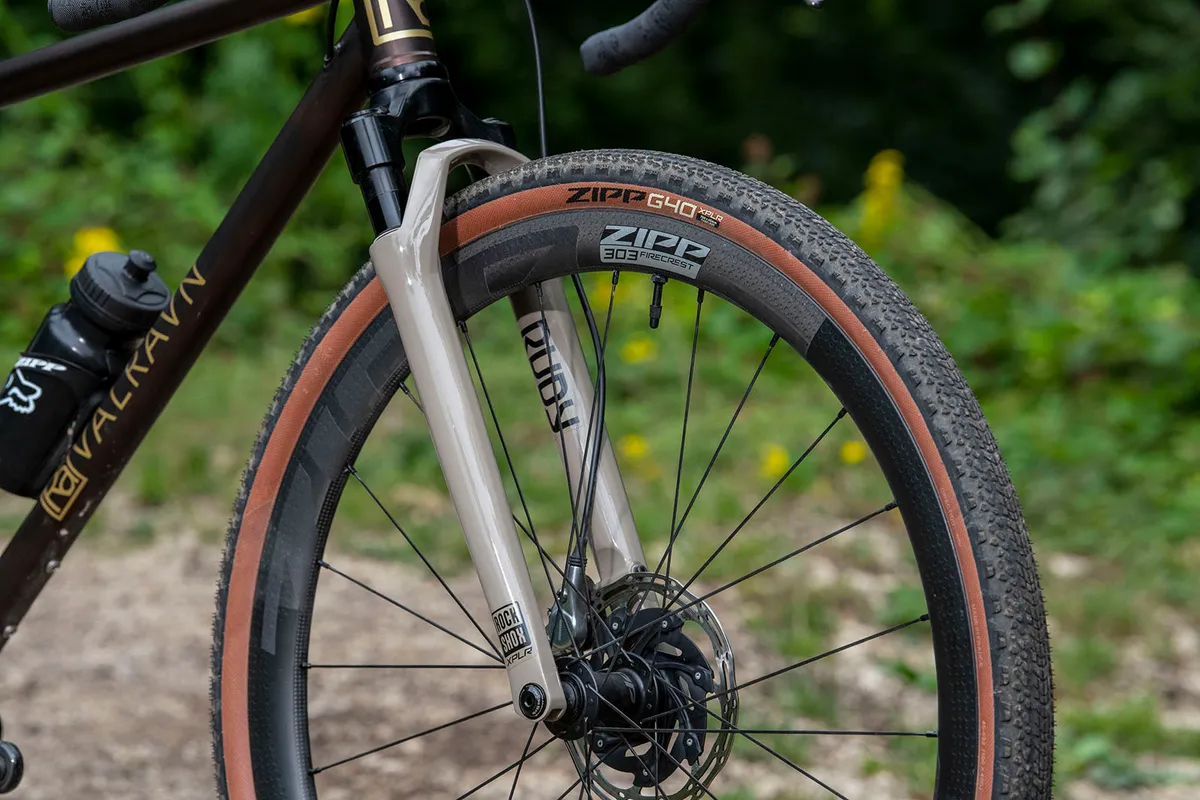
In addition to wide tyres, relaxed geometry and low gearing, many of the latest machines have active or passive gravel bike suspension systems built into them.
Much like bikes in the endurance road category, these features could take the form of slender chainstays, a bowed top tube or a skinny seatpost, all of which are designed to flex in order to absorb road chatter.
Some of the best gravel bikes take things one step further by using short-travel suspension forks, such as the Lefty Oliver or aesthetically odd but very effective Lauf Grit fork.
We've also seen the arrival of the RockShox Rudy XPLR gravel fork and the Fox 32 Taper-Cast Gravel.
How much do I have to spend on a gravel bike?

Well, that depends on what you define as a gravel bike. A used cyclocross bike, for example, could work perfectly well as a gravel bike and cost you a fraction of the cost of even the most basic ‘true’ gravel machine.
You can buy gravel bikes for under £1,000 with an alloy frame with entry-level components with gravel bikes under £2,000 offering slightly higher specs.
A mid-range build from a major brand will likely cost in excess of £2,000 / $2,800. Aluminium frames still dominate here but they'll sport more up-to-date designs in terms of tubing, geometry, tyre clearance and mounting points.
Spend more and you'll start to step into the world of carbon frames, with upscale components to match.
As is normally the case in the cycling world, it’s possible to spend a small (or not so small) fortune on a custom-built bike should you wish to.
What else do I need for gravel riding?
The growth in gravel riding has been matched with the growth in gravel-specific kit. While you can go gravel riding with your normal cycling – or sports – kit, there are numerous gravel accessories, pedals and shoes that can enhance your time riding off-road.
